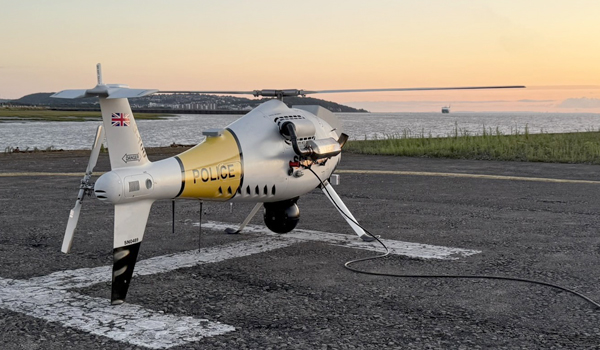CAA unlocks next stage in police uncrewed aircraft trials
The National Police Air Service (NPAS) has received approval from the Civil Aviation Authority (CAA) to advance its uncrewed aircraft trials into a Temporary Reserved Airspace (TRA) within Class G (uncontrolled) airspace.
This will enable daytime trial flights for the first time, while allowing equipped general aviation operators to safely share the same airspace.
This milestone comes after careful consideration of a detailed safety case, presented to the UK regulator by the NPAS Futures and Innovation Team.
NPAS says it marks “an important step” in the development of the trials of Beyond Visual Line of Sight (BVLOS) uncrewed aircraft, which are already showing promising results for the future of policing from the air.
Sophie O’Sullivan, director of Future Safety and Innovation at the UK Civil Aviation Authority, said: “Drone technology continues to advance and has the potential to deliver a range of public benefits, including supporting crewed emergency air services in their important work.
“Together with operators such as the NPAS, we are working to make drone operations beyond visual line of sight safe for all users of airspace by 2027.
“This project is making an important contribution to that work by testing and demonstrating how drones can operate with other emergency service crewed aircraft and ground support and in a way that is demonstrably safe for all those flying in UK skies.”
Since July 2025, trials of uncrewed aircraft have only been able to operate from Avonmouth Port under the restrictions of a Temporary Danger Airspace (TDA), which prevented other operators from entering the airspace and restricted flying from 10pm to 3am.
The approval of a TRA, supported by a Transponder Mandatory Zone (TMZ) in Class G airspace, further opens the airspace and permits daytime flying – allowing NPAS to significantly expand the testing and development of its ‘detect and avoid’ capabilities, vital for the safety of others and for integration into existing airspace.
The TRA will became ‘active’ from this week.
NPAS is the first organisation to successfully deploy a TRA in Class G, uncontrolled, airspace – a significant achievement in the safe integration of uncrewed aircraft into UK airspace.
Head of Futures and Innovation at NPAS, David Walters, said: “This has been the most challenging process I’ve ever been involved with but it’s also one of the most rewarding.
“This puts a huge focus on the importance of our trials, not only in exploring the future opportunities for police aviation, but for working with the regulator and partners in informing the safe integration of uncrewed aircraft systems into UK air operations.”
Over the course of the trial, NPAS has logged more than 90 hours of flight time, with the longest single flight reaching 4.5 hours and covering a distance of 297km.
The capabilities were tested in a real-life scenario last month, when the trials team, flying over the Severn Bridge, picked up a ‘Man Overboard Alert’.
Diverting from the trial, the crew immediately liaised with HM Coastguard and emergency services partners and directed its camera focus to the location of the bridge, from which the alert was activated.
While it was quickly determined it was a false alarm, the crew was successful in its immediate and effective response to a real-life situation, providing valuable exercise experience.
To further test and demonstrate operational capabilities, NPAS will be conducting joint emergency exercises in November with Search and Rescue, Severn Area Rescue Association and Mountain Rescue teams, to help inform future deployment strategies and strengthen collaboration across emergency services.
Trial highlights also include:
Radar and ADS-B integration: Successful detection and tracking of cooperative and non-cooperative airspace users;
Payload testing: Thermal identification of people at 3km away, tree canopy penetration and temperature-obscured missing person searches, with live video downlink being shared directly to the NPAS Operations Centre in Wakefield;
Surveillance: Onboard radar effectively tracked an NPAS fixed-wing aircraft; and
Stakeholder engagement: The trials team has delivered demonstrations to a wide array of stakeholders, including representatives from the Home Office, police drone teams, aviation industry leaders, CAA and National Air Traffic Control Service. Further visits are planned for senior police and police and crime commissioners and overseas police teams.
The NPAS trials are due to operate within the TRA from Avonmouth Port until the end of 2025, at which time all the data gathered will be collated, analysed and presented to stakeholders to inform the future vision of UK police air support.


